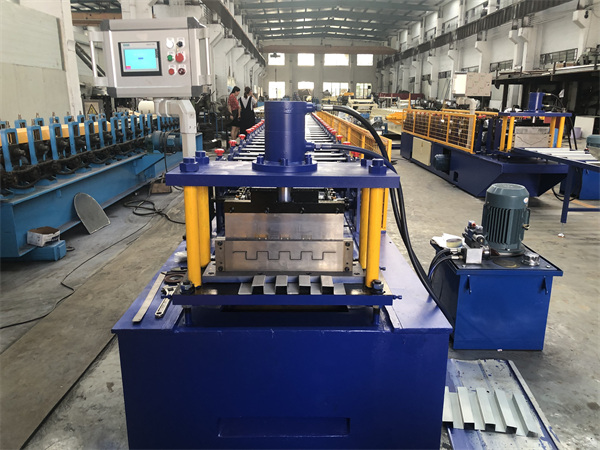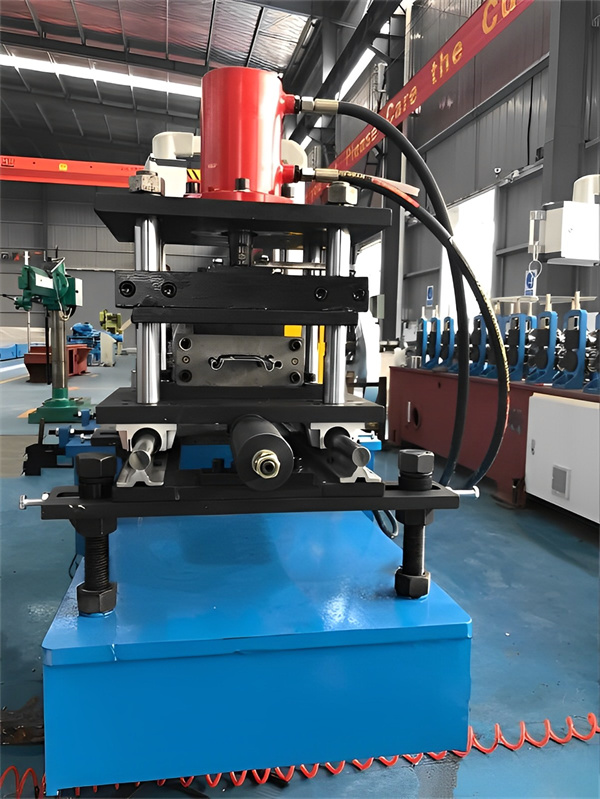Introduction
Shelf roll forming machines are an essential tool in the manufacturing industry, specifically designed to streamline the process of creating shelves with precision and efficiency. These machines have revolutionized the way shelving systems are produced, offering various advantages over traditional manufacturing methods.
Benefits of Using Shelf Roll Forming Machines
Shelf roll forming machines offer a multitude of benefits that make them a preferred choice for manufacturers:
1. High Efficiency and Speed
Shelf roll forming machines can rapidly produce shelves in a continuous manner, minimizing production time and increasing overall efficiency.
2. Customization Possibilities
Manufacturers can easily adjust the machine settings to produce shelves of different sizes, shapes, and designs, allowing for a high level of customization.
3. Cost-Effectiveness
The streamlined production process reduces labor costs and material wastage, making shelf roll forming a cost-effective option.
4. Consistent Quality
These machines ensure consistent and precise shaping of shelves, maintaining a high standard of quality across the production line.
5. Versatility
Shelf roll forming machines can be used with various materials such as steel, aluminum, and even composite materials, enhancing their versatility.

Key Features to Look for in a Shelf Roll Forming Machine
When choosing a shelf roll forming machine, several key features should be considered:
1. Material Compatibility
Ensure that the machine can work with the type of material you intend to use, whether it’s steel, aluminum, or others.
2. Customization Options
Look for machines that offer adjustable settings for width, height, and other dimensions to cater to your specific requirements.
3. Automation and Control Systems
Advanced control systems enhance precision and reduce the risk of errors during the forming process.
4. Durability and Build Quality
A sturdy and well-built machine will have a longer lifespan and require less frequent maintenance.
How to Choose the Right Shelf Roll Forming Machine for Your Business
Selecting the right shelf roll forming machine involves a systematic approach:
1. Assess Your Production Needs
Determine the volume and types of shelves you’ll be producing to choose a machine that aligns with your production demands.
2. Research Different Models
Compare different machine models, considering their features, capabilities, and customer reviews.
3. Budget Considerations
Set a budget and seek a machine that offers the best value for its features within your financial constraints.
4. Consult Manufacturers and Experts
Reach out to manufacturers and industry experts to gain insights and recommendations based on your business requirements.
Step-by-Step Guide to Operating a Shelf Roll Forming Machine
Operating a shelf roll forming machine involves several steps:
1. Material Loading
Place the chosen material onto the machine’s feeder system, ensuring proper alignment.
2. Machine Setup
Adjust the machine’s settings to match the desired dimensions and specifications of the shelves.
3. Start the Forming Process
Initiate the machine, and the material will pass through rollers and other components to take the desired shape.
4. Quality Check
Inspect the formed shelves for any defects or deviations from the desired specifications.

Maintenance and Care Tips for Shelf Roll Forming Machines
Regular maintenance is essential to ensure the longevity and optimal performance of shelf roll forming machines:
1. Cleaning and Lubrication
Clean the machine regularly and apply appropriate lubrication to moving parts to prevent wear and tear.
2. Inspection and Repairs
Periodically inspect the machine for any signs of damage or malfunction and address issues promptly.
3. Training and Skill Development
Provide training to machine operators on proper usage, maintenance, and safety protocols.
Common Challenges and Troubleshooting Solutions
Challenges in shelf roll forming may include material inconsistency, misalignment, and equipment breakdowns:
1. Material Inconsistency
Ensure that the material being used is of uniform quality and thickness to prevent forming issues.
2. Misalignment
Regularly calibrate the machine to avoid misalignment problems during the forming process.
3. Equipment Breakdowns
Maintain a spare parts inventory and have a troubleshooting guide ready to address unexpected breakdowns.
Innovations in Shelf Roll Forming Technology
The shelf roll forming industry continues to evolve with technological advancements:
1. Automation Integration
Intelligent automation systems are being integrated into machines, enhancing precision and reducing human intervention.
2. Real-time Monitoring
Sensors and IoT technologies allow manufacturers to monitor machine performance and detect anomalies in real time.
3. Quick Changeover Features
Modern machines are designed for rapid changeovers, enabling efficient production of diverse shelf designs.
The Future of Shelf Roll Forming Machinery
The future of shelf roll forming looks promising:
1. Enhanced Sustainability
Manufacturers are incorporating sustainable materials and energy-efficient processes into their machines.
2. AI and Machine Learning
Artificial intelligence will play a greater role in optimizing machine performance, predictive maintenance, and quality control.
3. On-Demand Production
Machines may offer on-demand production capabilities, reducing inventory and waste.
Sustainable Practices in Shelf Roll Forming
Shelf roll forming can contribute to sustainability efforts:
1. Recyclable Materials
Choose materials that are recyclable to minimize environmental impact.
2. Energy Efficiency
Opt for machines that consume less energy during operation.
3. Waste Reduction
Implement processes that minimize material wastage during production.

Case Studies: Successful Implementations of Shelf Roll Forming Solutions
Examining real-world examples of successful shelf roll forming implementations:
1. Automotive Industry
Shelf roll forming has enabled the automotive industry to efficiently produce customized storage solutions for parts and components.
2. Retail Sector
Retailers benefit from customized shelves that cater to their unique store layouts and branding requirements.
Comparing Shelf Roll Forming with Traditional Manufacturing Methods
Shelf roll forming offers distinct advantages over traditional manufacturing methods:
1. Efficiency
Roll forming machines significantly expedite production compared to manual methods.
2. Precision
Machines ensure precise shaping, reducing the likelihood of errors seen in manual fabrication.
3. Cost-effectiveness
Roll forming optimizes material usage, reducing costs associated with wastage.
Ensuring Operator Safety: Guidelines and Practices
Operator safety is paramount when using shelf roll forming machines:
1. Training and Certification
Operators should undergo thorough training and obtain proper certifications before using the machines.
2. Safety Equipment
Provide operators with appropriate personal protective equipment (PPE), such as gloves, goggles, and hearing protection, to minimize the risk of injuries.
3. Emergency Stop Protocols
Ensure that operators are familiar with emergency stop buttons and procedures to halt the machine in case of any safety concerns.
Cost Analysis: Shelf Roll Forming vs. Outsourcing
Comparing the financial implications of in-house shelf roll forming versus outsourcing:
1. Initial Investment
In-house roll forming requires an upfront investment in the machine, while outsourcing eliminates this initial cost.
2. Long-Term Costs
While outsourcing may have lower immediate costs, in-house roll forming can lead to significant savings over time, especially for high-volume production.
3. Quality Control
In-house production allows for direct quality control, reducing the risk of defects that can arise from outsourcing.

Conclusion
Shelf roll forming machines have revolutionized the manufacturing industry by offering efficient, precise, and customizable solutions for shelf production. Their benefits extend beyond traditional methods, offering cost-effectiveness, versatility, and consistent quality. As technology continues to advance, these machines are integrating automation, AI, and sustainable practices, shaping the future of shelf manufacturing.
By choosing the right machine, implementing proper maintenance, and prioritizing operator safety, manufacturers can maximize the potential of shelf roll forming while contributing to efficient and sustainable production practices.
FAQs
1. Are shelf roll forming machines suitable for small businesses?
Yes, shelf roll forming machines come in various sizes and capacities, making them suitable for businesses of all scales.
2. Can I use different materials with a single shelf roll forming machine?
Yes, many modern shelf roll forming machines are designed to accommodate various materials, allowing for versatility in production.
3. How often should I perform maintenance on a shelf roll forming machine?
Regular maintenance should be performed based on the manufacturer’s recommendations and the machine’s usage frequency.
4. What safety measures should operators take when using these machines?
Operators should wear appropriate PPE, undergo training, and adhere to emergency stop protocols to ensure their safety.
5. Is in-house shelf roll forming cost-effective in the long run?
Yes, in-house roll forming can lead to significant long-term savings, especially for businesses with high production volumes.
